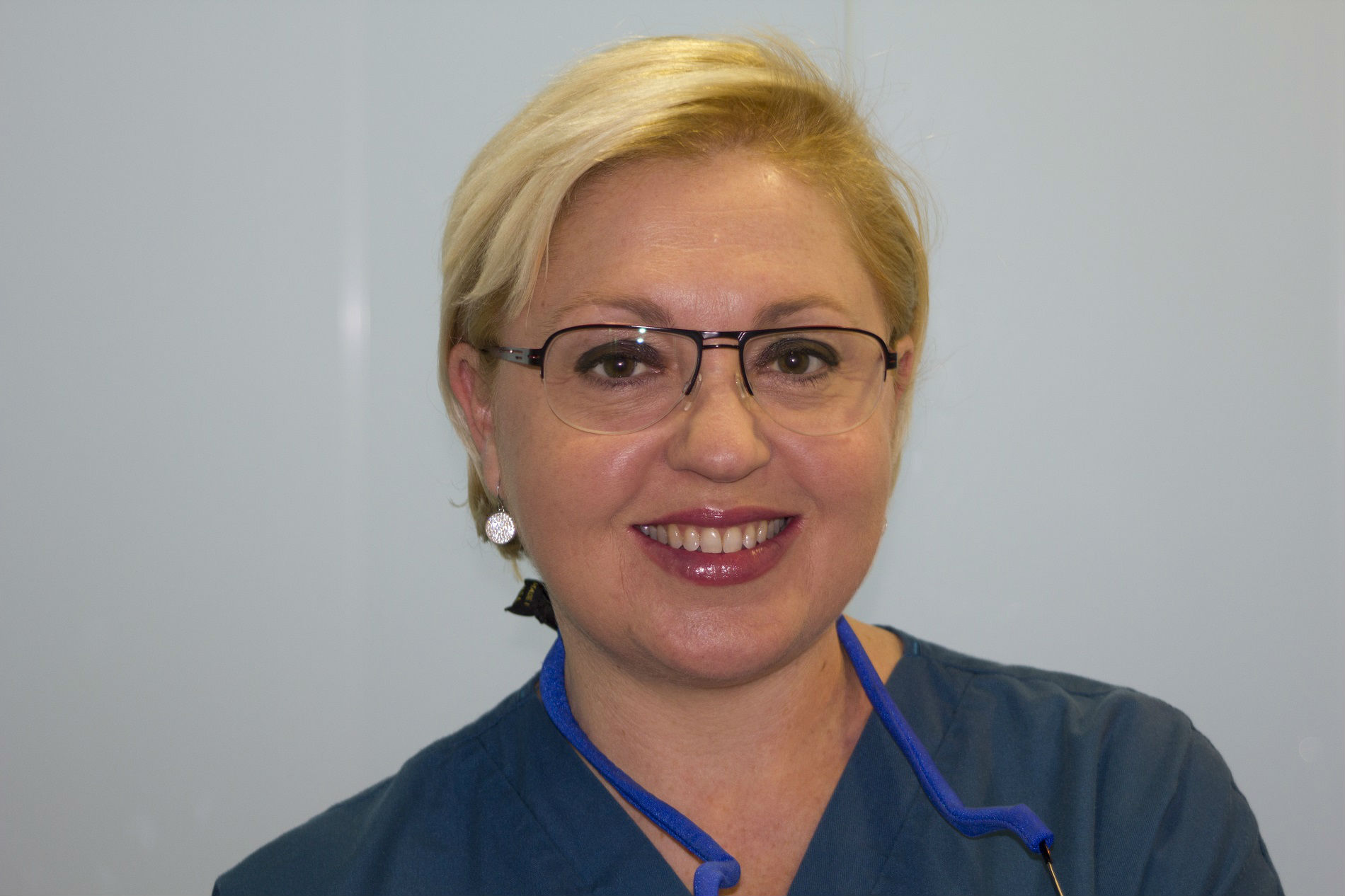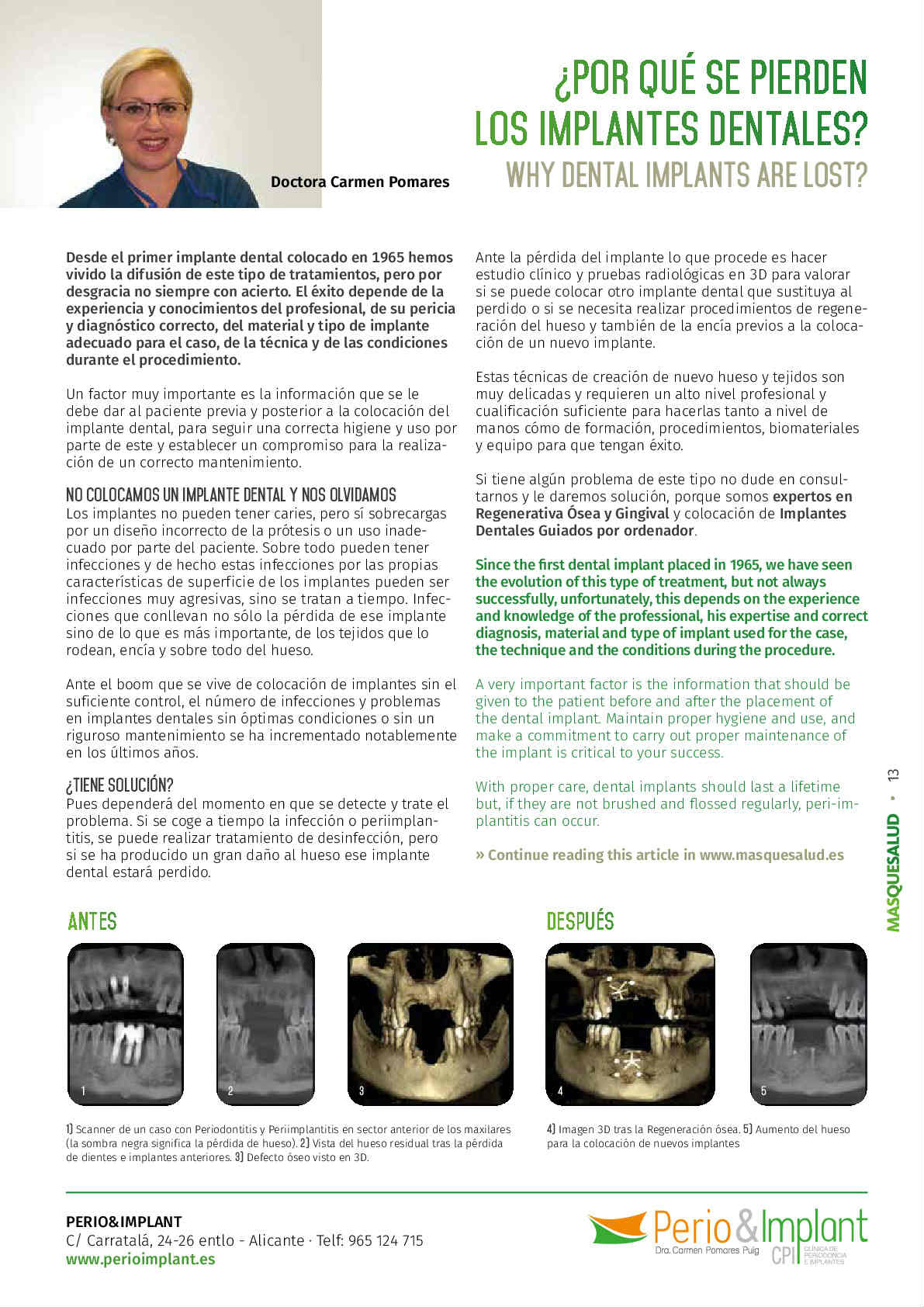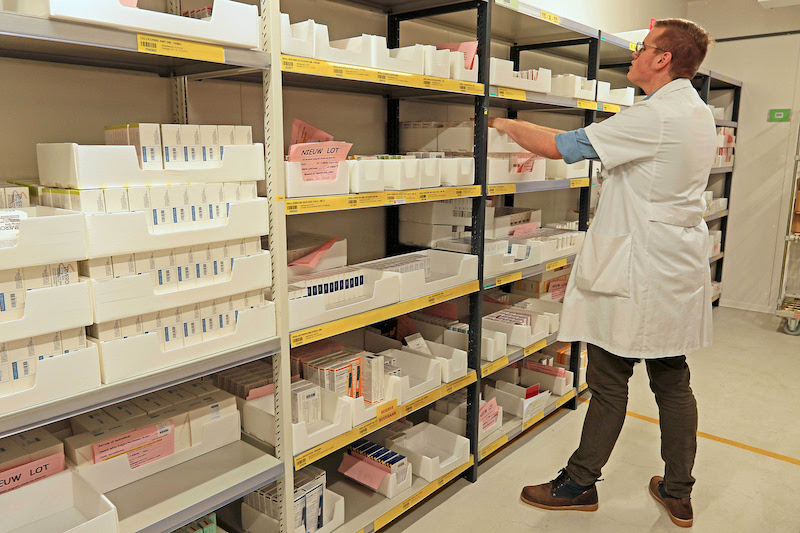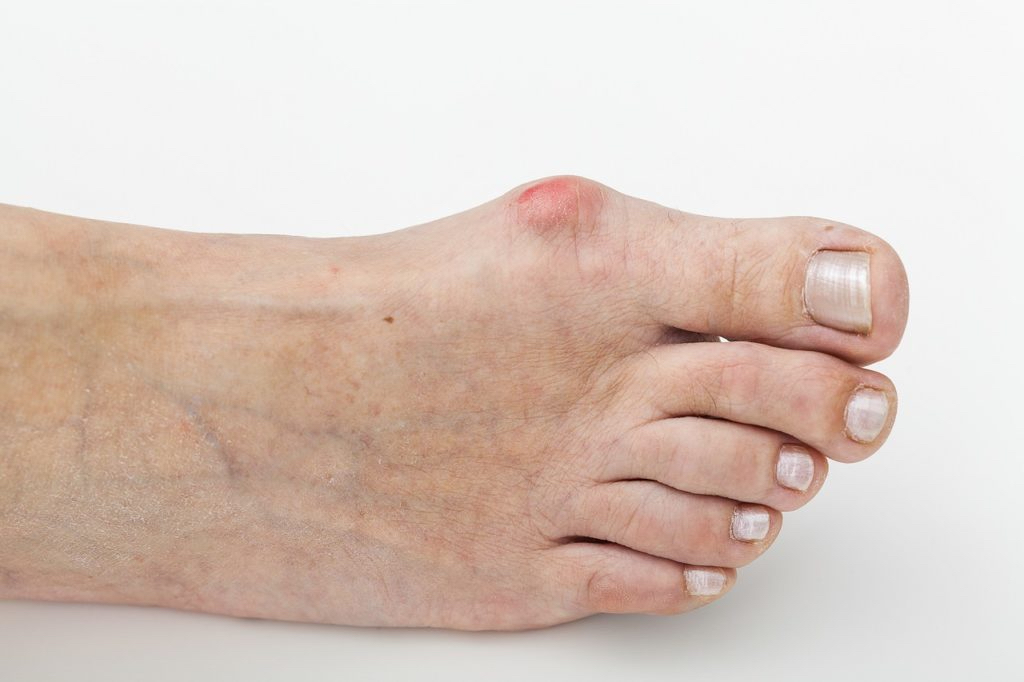
Why dental implants are lost?
Since the first dental implant placed in 1965, we have seen the evolution of this type of treatment, but not always successfully, unfortunately, this depends on the experience and knowledge of the professional, his expertise and correct diagnosis, material and type of implant used for the case, the technique and the conditions during the procedure.
Since the first dental implant placed in 1965 we have lived the diffusion of this type of treatments, but unfortunately not always correctly. Success depends on the experience and knowledge of the professional, his / her expertise and correct diagnosis, the material and type of implant appropriate for the case, the technique and the conditions during the procedure.
A very important factor is the information that should be given to the patient before and after the placement of the dental implant, to follow a correct hygiene and use by the dental implant and to establish a commitment to perform a correct maintenance.
Don’t Forget To Care For A Dental Implant
Implants can not have decay, but overloads due to incorrect design of the prosthesis or improper use by the patient. Especially they can have infections and in fact these infections by the own surface characteristics of the implants can be very aggressive infections but they are treated in time. Infections that involve not only the loss of that implant but of what is more important, of the surrounding tissues, gingiva and especially of the bone.
Faced with the boom of implant placement without sufficient control, the number of infections and problems in dental implants without optimal conditions or without a rigorous maintenance has increased significantly in recent years.
It has a solution?
It will depend on when the problem is detected and treated.
If the infection or peri-implantitis is caught in time, disinfection treatment can be performed, but if there has been a great damage to the bone that dental implant will be lost.
Before implant loss, it is necessary to perform a clinical study and 3D radiological tests to evaluate if another dental implant can be placed to replace the missing one or if bone and gingival regeneration procedures are required prior to the placement of a new implant.
These new bone and tissue creation techniques are very delicate and require a high professional level and sufficient qualification to do them both at the hands level and training, procedures, biomaterials and equipment for them to be successful.
If you have any problems of this type do not hesitate to consult us and we will give you solution, because we are experts in Regenerative Bone and Gingival and placement of Dental Implants Guided by computer.
Dr. Carmen Pomares
* Article published in the magazine number 43 of Más Que Salud.





